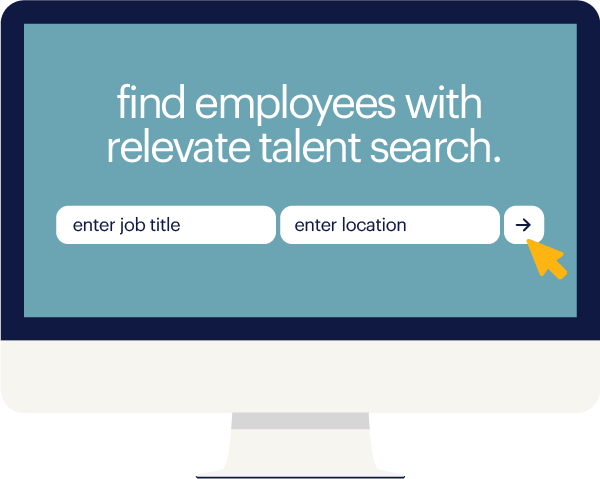What's in store for employers looking to hire legal talent in the year ahead? We crunched the numbers and found out.
Here's a look at some of the biggest trends affecting legal hiring right now, the challenges they'll pose to you and what you can do to overcome them.
the numbers you should know
Despite increased reliance on digital tools, The Bureau of Labor Statistics actually predicts that job opportunities for lawyers will grow at an above-average rate over the next several years.
 job opportunities will grow 7% for lawyers over the next 8 years, faster than the national average.
job opportunities will grow 7% for lawyers over the next 8 years, faster than the national average.
Growth can be attributed to the increased need for legal support and paralegal professionals as firms look to improve efficiency. Concerns around how to navigate the new legal minefields of data ownership and privacy, on the other hand, have resulted in more hires being made to help set precedents and define new guidelines.
Here's what demand looked like over the past year for some of the occupation's most in-demand positions according to labor-insight provider, Burning Glass:
-
attorneys: 99,406 job postings
-
legal secretaries: 16,530 job postings
-
legal support specialists: 5,751 job postings
-
paralegals: 79,905 job postings
Unfortunately, if you're looking to hire in the legal field, there's another number you should be aware of: one — or .9 to be precise. That's how low the current unemployment rate is for lawyers right now.
the national unemployment rate for paralegals is 2.5%, for lawyers it's even lower at .9%.
what this means for employers
If you're looking to hire legal talent today, expect to encounter challenges. While growth is good, unemployment remains low, and there will likely be more opportunities than there are candidates. That's not to say all hope is lost, however. With a few tweaks to your hiring approach, you'll be able to strengthen your case for candidates and stay competitive for top legal talent, no matter how tight the hiring market may be. Here's what you can do.
 trend:
trend:
shortage of next-gen talent on the market
how this affects you:
decreases your chances of replacing your retirees
solution:
modernize your firm's culture
If you were holding out for a fresh crop of law-school graduates to enter the market and solve the talent crisis, it may be time to rethink your strategy
Just look at the trends over time: In 1980, for instance, 26 percent of all licensed attorneys in the United States were under 35. Today, only four percent are under 30. If you want to make yourself more competitive for the next generation of legal talent, then invest some time in improving your firm's culture.
 |
|
 |
1980:
26% of U.S. attorneys were under 35. |
|
2018:
only 4% are under 30. |
here's what millennials want from a modern-day firm:
Growth and mobility: Provide opportunities for advancement, and clearly communicate the path forward to employees. This kind of transparency can also help keep workers from job-hopping: Fifty-seven percent of employees said they would need to leave their current companies in order to advance their careers.
Work-life balance: Millennials are savvy job seekers who stay on top of the latest workplace trends, and they'll use this knowledge to inform their own career decisions, often changing jobs for better benefits and perks. To keep up with competitors when it comes to the work-life balance at your firm, consider providing:
Purpose: Millennials want to do meaningful work and feel like they're contributing to a greater purpose. For law firms, this can often take the form of supporting workers who want to take on pro-bono assignments for causes they care about.
 trend:
trend:
low unemployment rate
how this affects you:
fewer candidates available
solution:
source passive candidates
Passive candidates, or candidates who are not actively looking for a new job, can be a great way to find talent when the hiring market is scarce. Passive talent has been shown to be 120 percent more likely to make an impact, and 33 percent more likely to take on challenging assignments.
what to do:
Source: Spruce up your employer brand, and establish a presence on all major social channels to search for passive candidates. Make sure to attend in-person networking events and conferences too.
Branch out: Leverage the in-person networks of your existing employees. Communicate your hiring needs to your staff and see if anyone knows someone who may fit the bill.
Partner with a staffing firm: Staffing firms have access to pre-established talent networks. That means they can find qualified passive candidates fast and save you from having to spend your own time searching.
 trend:
trend:
shortage of job seekers on the market
how this affects you:
makes it harder to find talent
solution:
keep your pay rates competitive
Salary isn't everything — in fact, 61 percent of employees we surveyed said they'd be willing to accept a lower salary if a company had a great benefits package — but it also can't hurt your chances of landing talent, either. With so much competition and fewer and fewer job seekers on the market, you want to make sure that your compensation levels can match, or even surpass, those of your competitors.
what to do:
Use an online salary calculator: To figure out the right rates that you should be paying, use an online salary calculator. With data updated regularly, it's a convenient resource that will help you match the going rate for talent in your market.
Supplement pay with benefits: Improving work-life balance should be your first priority, but there are other ways you can boost your benefits package to incentivize talent to join your organization.
Our research revealed that today's workers are interested in benefits that enhance their overall quality of life and are tailored to their different life stages: Think more comprehensive health insurance for older works and student loan assistance for new recruits.
 61% of employees said they would
61% of employees said they would
be willing to accept a lower salary
if a company had a great benefits
package.
Get the word out: If you're planning on providing better pay and benefits, make sure you're advertising that in your job postings. They're the first point of contact that many job seekers will have with your firm, so you want to make sure you're able to write them well.
takeaways
High demand for legal services coupled with low unemployment means that finding the right talent for your organization is no open and shut case.
To stay competitive, remember to:
-
modernize your workplace culture to make it more palatable to younger job seekers
-
source passive candidates to find talent despite the shortage of talent
-
keep your pay rates competitive with the market for candidates in your area
Incorporating these suggestions into your hiring plan will make you more effective at pursuing and retaining talent. But if you want to take your hiring strategy to an even more advanced level, consider adopting a targeted approach to finding talent.
Tailoring your hiring plan differently to align with each individual position you're looking to fill can yield you even greater results when it comes to finding the best legal talent available. To get started, visit the page below to get tailored hiring tips for some of the legal profession's most in-demand positions.










